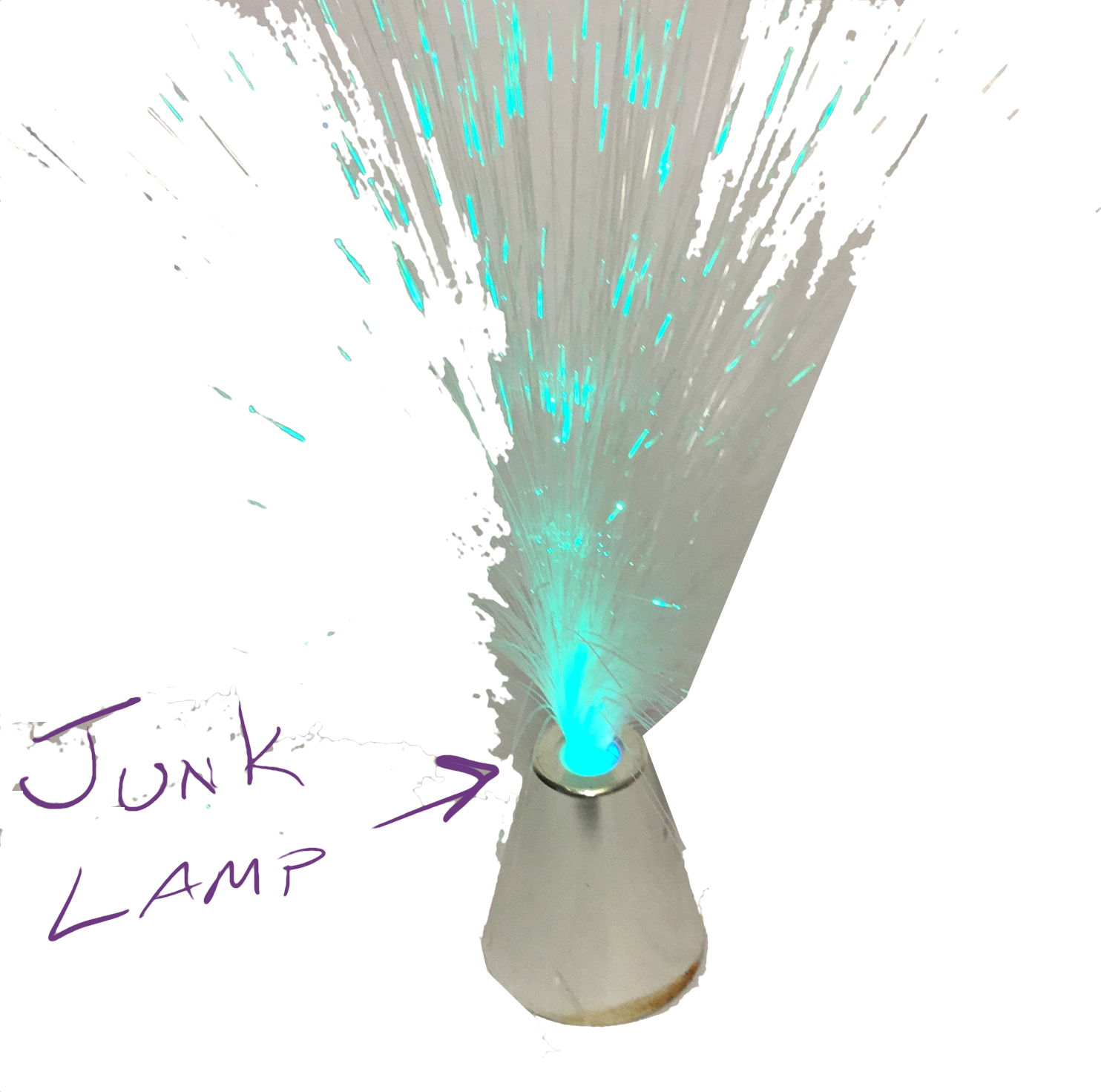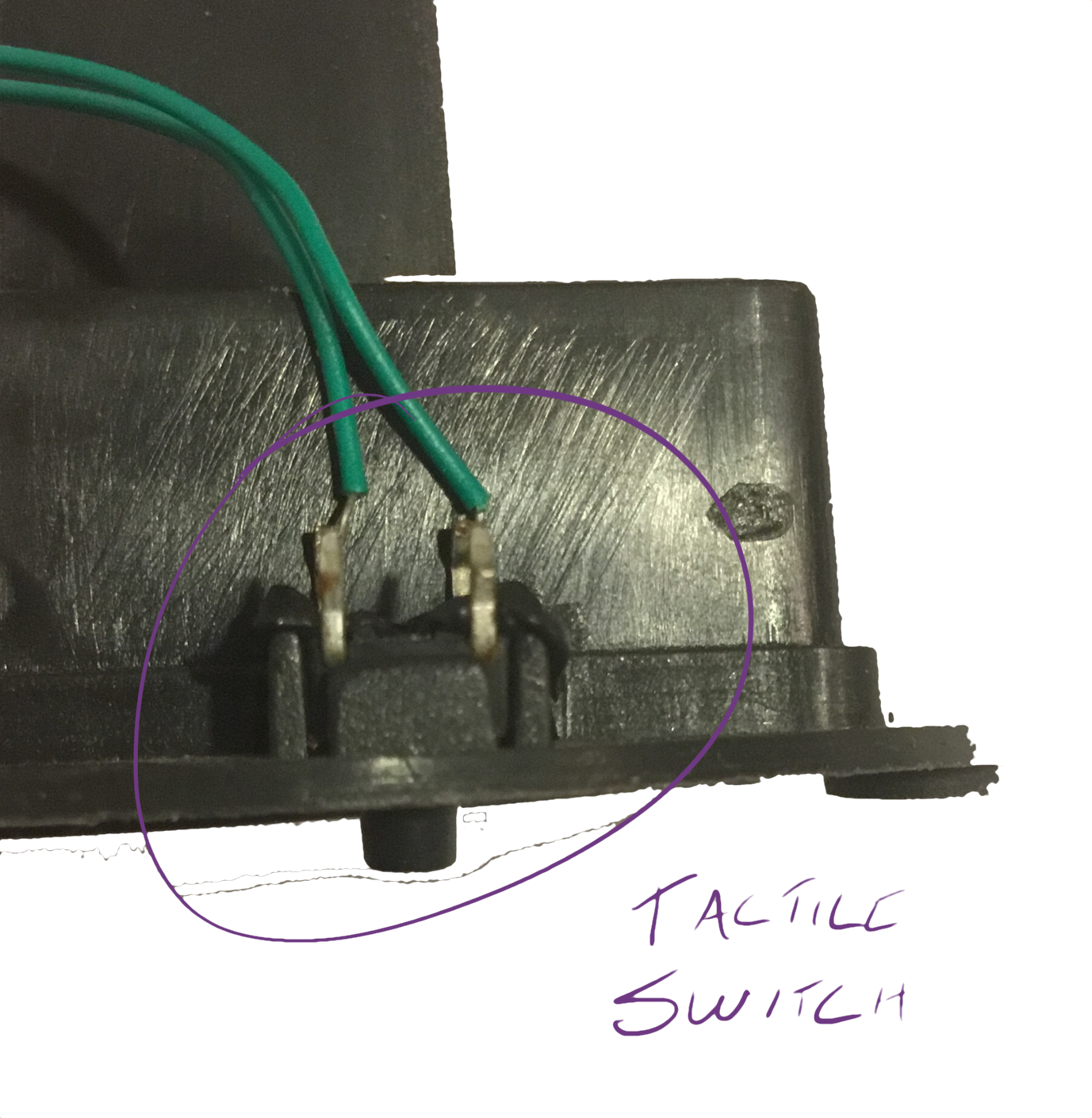Disregarding mechanical connections will ruin your projects. Proper use of mechanical connections will level up your projects tremendously. Often the difference between an eventual scrap heap and an heirloom are the mechanical connections and components. Many of us tinkerers ignore them completely, so I’m going to give a crash course.
At the end of this series, you’ll have an understanding of some of the concepts involved in designing both small scale pieces and installation projects, by way of two examples. The first is a contrived project. We’re going to make a booby trap. Step in the box, and an alarm goes off and thousands of boogers rain down from above. It’s a booger storm trap.

We’ll also have a very strong example, with both pros and cons, in an exceptionally crappy giveaway lamp. This one has a company logo on one side. A third party seller has them on Amazon for under five bucks. I like this as an example because for every time you ask “why would they __” the answer is “because it is cheaper at the scale in question”.

An enormous number of failures in electrical systems are due to mechanical failures.
When your headphones are ripped out of your phone, or your ears, that’s a mechanical failure. When the button on your dishwasher stops working, but the rest is fine, that’s a mechanical failure. When your charge cable frays and stops charging, that’s a mechanical failure. When your charge port gets full of dust and the cord doesn’t fit, that’s a mechanical failure. When you trip over the power cord and the whole thing falls to the floor that’s a mechanical failure. When you carry a ladder across your driveway and knick your cable line, that’s a mechanical failure.
Mechanical failures can cascade and cause electrical failures, which in extreme cases can be fatal.
The easiest way to ensure that your electronics are safe from mechanical failures is to not put them under mechanical stress. This is often impossible. Consider the list of goals below.
Keep it in a case. You can get away with a lot of other tiny issues if your system is entirely enclosed. Your case should be sturdy, it should have ample room for your components, and your components should not move inside the case (shake it! does it make a noise? if so, you could probably do better)
Minimize mechanical components. Can you use a capactive touch button instead of a tactile switch?[1] Can you use an optical encoder instead of a potentiometer? Can you use a radio instead of wires?

I can’t state this one more bluntly. A solder joint has mechanical properties, but don’t count on them under stress. Our lamp uses solder as both the mechanical and electrical connection between all three of it’s electrical components.
Mitigation: The board is fused into place. The plastic mold and the PCB mate, and during assembly the mold is melted to hold the PCB in place. The tactile switch is also mated to the mold in the same way, and the battery compartment is part of the mold. All of the parts now have a mechanical connection to each other to create one part, the wires and joints aren’t under stress.
Takeaway: Plan on how your boards and any external connected components connect to each other. Many projects use plastic clips or mounting holes. The lamp uses straight plastic nubs instead of spring clips. This is because the injection mold tool is cheaper if it doesn’t have complex movements required to have the overhanging clips.

Solder joints are orders of magnitude harder to service than combined electrical and mechanical plugs. This is a reason why repair shops complain when apple solders the screen to the daughter board that drives it. The screen is more likely to break, but now you need to replace both components. It’s often cheaper, and sometimes more convenient, but you should be aware of the tradeoffs you’re making. If you’re in charge of maintenance, make your components servicable. To me the most flexible and accessible connector for hobby projects is a screw terminal. It doesn’t take special tools to prepare for.
If you only plan on these two things, you’re really off to a great start. In the next post, we’ll plan and construct the booger trap.
[1] Capactive touch buttons instead of tactile switches have other design problems. I don’t like them from an interaction standpoint for most purposes, but they do solve the mechanical problem pretty well.
21st January 2016
I won't ever give out your email address. I don't publish comments but if you'd like to write to me then you could use this form.
I'm Issac. I live in Oakland. I make things for fun and money. I use electronics and computers and software. I manage teams and projects top to bottom. I've worked as a consultant, software engineer, hardware designer, artist, technology director and team lead. I do occasional fabrication in wood and plastic and metal. I run a boutique interactive agency with my brother Kasey and a roving cast of experts at Kelly Creative Tech. I was the Director of Technology for Nonchalance during the The Latitude Society project. I was the Lead Web Developer and then Technical Marketing Engineer at Nebula, which made an OpenStack Appliance. I've been building things on the web and in person since leaving Ohio State University's Electrical and Computer engineering program in 2007. Lots of other really dorky things happened to me before that, like dropping out of high school to go to university, getting an Eagle Scout award, and getting 6th in a state-wide algebra competition. I have an affinity for hopscotch.